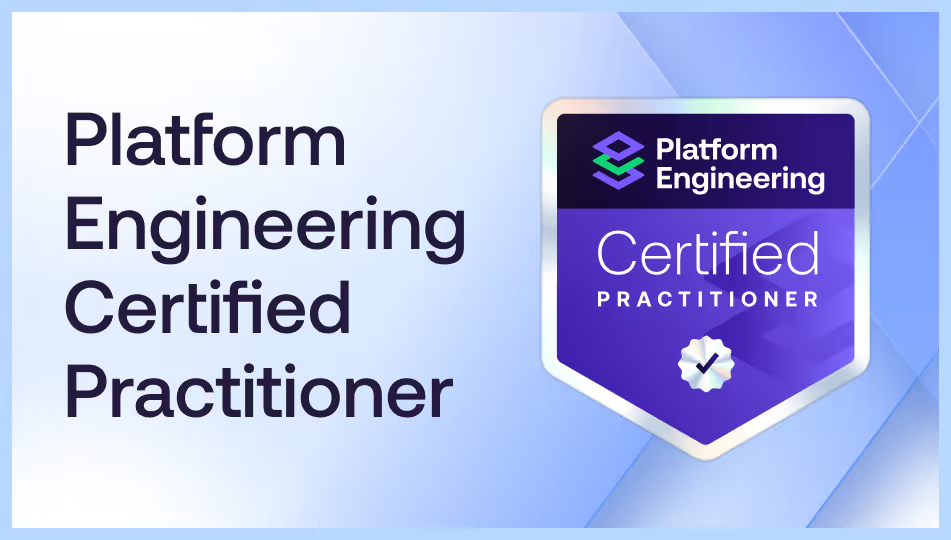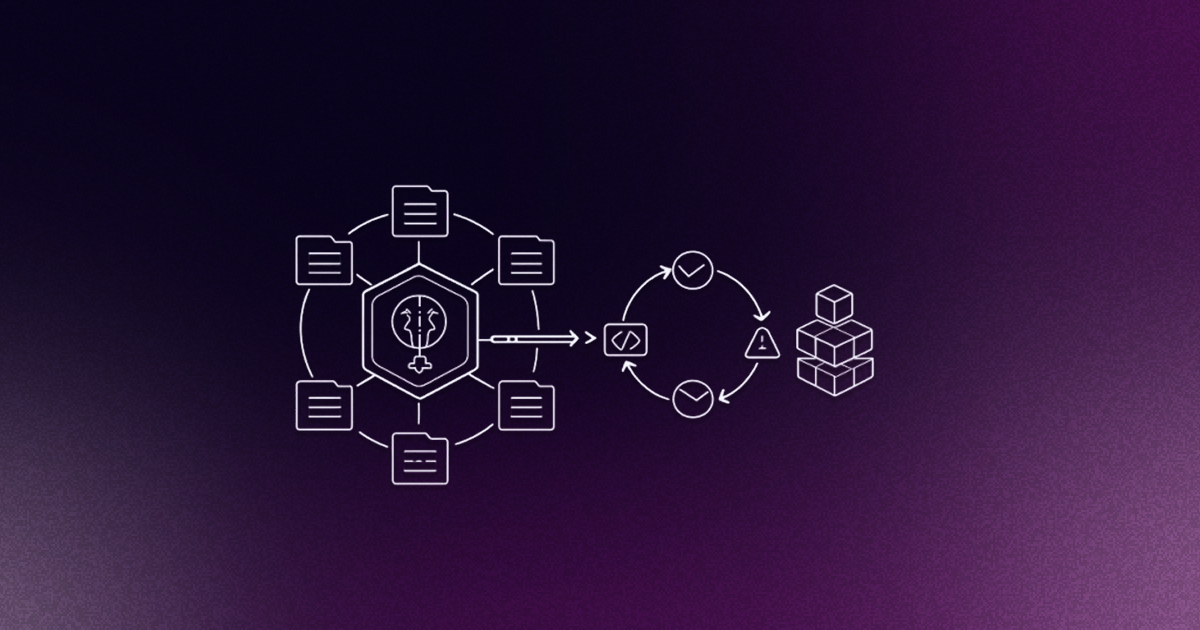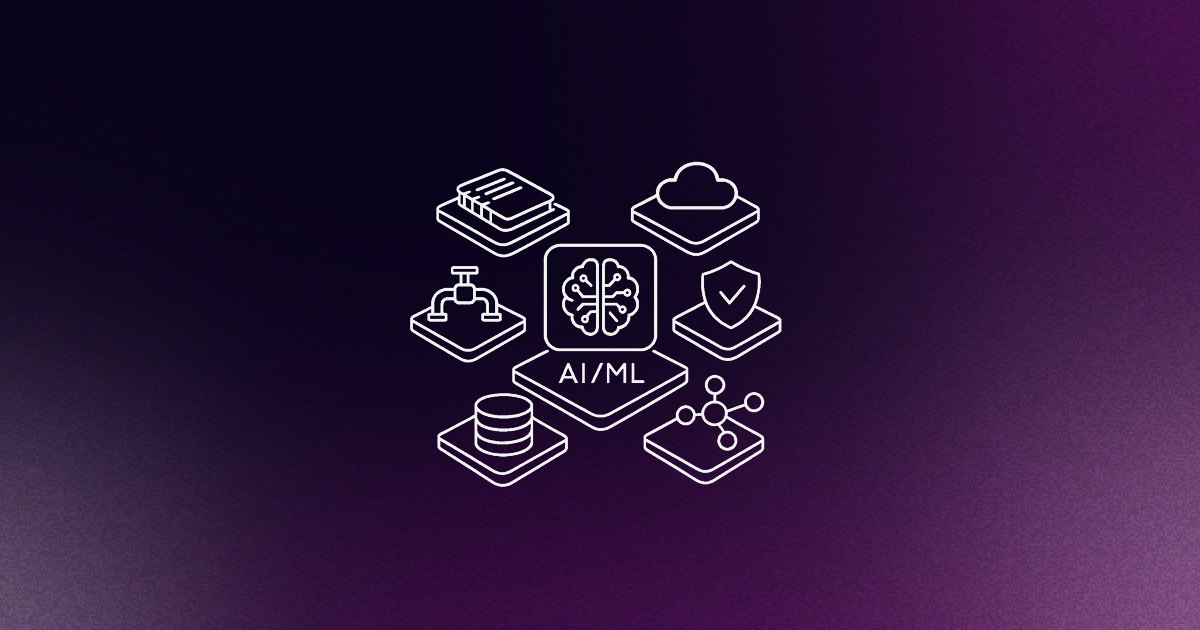Platform teams are facing increasing pressure to operationalize artificial intelligence across the organization. As tools like generative AI continue to redefine traditional workflows, these teams are expected to capitalize on the trend and implement enterprise-scale solutions without compromising security, governance, or productivity.
What began as experimentation with tools like ChatGPT and GitHub Copilot has rapidly evolved into a strategic imperative. Platform teams are no longer being asked whether they'll integrate AI into development workflows: they're being asked how quickly they can do it.
And the clock is ticking.
Why platform teams are under pressure now
Platform teams have always carried a heavy load. After all, they’re responsible for building delivery pipelines, maintaining environments, and managing a large portion of the tooling that enables software development at scale.
But the explosion of AI tools has only intensified this responsibility, and it has resulted in unprecedented pressure from multiple directions.
The C-suite sees a flashy product demo or hears about how their competitors are using AI, whether it’s coding a new feature or fixing a bug in seconds. Seeing its potential, executives are demanding rapid organization-wide implementation, often without understanding the complexity involved.
At the same time, developers are installing tools like GitHub Copilot, Cursor, and Windsurf and experiencing immediate productivity gains. They’re empowered to code faster, debug smarter, and better maintain their flow state, and they’re on the hunt for even more powerful ways to use AI in their work.
Caught in the middle are platform teams, which are typically small and under-resourced. Now, they’re expected to secure and scale AI adoption, all while maintaining their existing responsibilities. When AI is evolving at a dizzying pace, with new options appearing weekly, these teams are pushed to their limit as they struggle to identify the best options and implement them effectively.
They can’t just wait out the storm and implement a proven solution a year later; this only creates a widening innovation gap. Teams that experiment with AI today build crucial expertise and develop a culture of productive experimentation, while organizations that remain on the sidelines miss this learning cycle, making it increasingly difficult to catch up as the technology advances. In a market where developers can easily find positions with a company that is leveraging cutting-edge tools, companies that lag behind in implementation will struggle to retain their best people.
The challenges of AI implementation
It isn’t as simple as licensing the latest and greatest AI tool and turning it over to developers. Platform teams have to overcome several implementation challenges when operationalizing AI.
The first involves self-installed developer tooling: AI-assisted editors and extensions like GitHub Copilot, Cursor, and Windsurf. While powerful and popular, they come with several challenges:
- Procurement hurdles: Many come from early-stage startups without enterprise-ready features or support.
- Security and policy gaps: Vendors often lack clarity on data handling, model hosting, and available controls.
- Cost management issues: Without proper guardrails, LLM token spending can quickly spiral out of control.
The second category involves deeper, infrastructure-level integrations such as LLM proxies, audit systems, and AI-enhanced internal tooling. These implementations require:
- Secure environment provisioning: Proper environments and sandboxes need to be securely provisioned for AI agents and applications.
- Workflow integration: Teams must properly integrate these new AI capabilities with existing development pipelines and processes.
- Resource management: Organizations must adopt new approaches to budgeting and allocation as AI introduces additional spending needs.
But even after these technical matters are sorted, companies still need to take a more involved role in AI adoption than they might think. Especially if developers and platform teams rely on traditional methodologies and solutions, they’ll need extensive training to realize the true value of their new tools and use them effectively.
That’s why the real challenge lies in bridging initial adoption with long-term value. Even if initial implementation shows promising results, the solution is ultimately ineffective if it can’t be maintained at scale. In addition to employee training, this means determining where tools fit within existing development lifecycles, handling updates and preventing configuration drift, monitoring for misuse, and ensuring quality when AI tools might fail silently or produce subtly flawed output.
Building a path forward: What successful organizations focus on
Platform teams that are successfully managing this pressure and operationalizing AI at scale tend to share similar characteristics.
For one, they maintain realistic expectations about AI. They view it as an augmentation layer, not a replacement for engineers - a copilot, not a driver. This pragmatic approach helps them focus on use cases where AI truly adds value, such as prototyping or enhancing debugging capabilities.
They also build for adaptation rather than one-time deployment. They recognize that AI represents an ongoing transformation, so they’ve designed their infrastructure with rapid evolution in mind.
But perhaps most importantly, successful platform teams have refined their focus and rely significantly on a strong feedback loop:
- Identifying high-impact use cases: They zero in on 3-5 specific applications like documentation generation or refactoring assistance.
- Listening to engineers: They don't wait for executive mandates but trust developer insights about which tools actually improve productivity.
- Starting with shadow IT assessment: They uncover what tools developers are already using informally before formalizing support.
- Measuring and communicating impact: They track usage, satisfaction, and outcomes to demonstrate value and secure leadership support.
The result is an environment where developers can safely experiment with AI tools while platform teams maintain appropriate governance, translating to faster innovation without sacrificing security or stability.
From gatekeeping AI to enabling strategic evolution
The role of the platform team is evolving rapidly, from gatekeepers focused primarily on security and control to enablers who create the conditions for innovation while maintaining appropriate governance.
Organizations that invest in their platform capabilities today will be best positioned to compete in an AI-centric future. This means building with scale and agility in mind, actively listening to developers, and moving quickly but not recklessly.
AI might feel like magic, but it relies on the sustainable, secure implementation that platform teams make possible.












